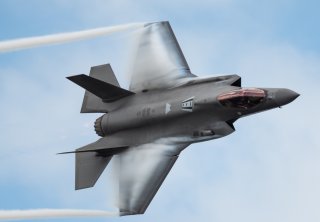United and Stronger: Austin and Stoltenberg Envision NATO's Future
The spread of the F-35 stealth fighter will make NATO’s multinational force stronger and more capable.
The United States and its NATO allies are now shaping a future alliance posture to accommodate a different global dynamic in the wake of Russia’s invasion of Ukraine.
U.S. defense secretary Lloyd Austin met with NATO chief Jens Stoltenberg at the Pentagon to solidify plans aimed at ensuring the alliance remains firm and well resourced to counter the threat posed by Russia.
Since the invasion of Ukraine, many European countries have not only contributed funds and weapons to Ukraine but have also increased their own defense spending in response to a new European threat landscape.
In his meeting with Stoltenberg, Austin emphasized the importance of NATO members increasing and sustaining their military funding in support of the alliance.
"Spending two percent of GDP is a floor, and not a ceiling," Austin said. "It's also important to increase the amount of common funding so that … NATO has the resources that it needs to accomplish the task our leaders have assigned us. And we fully support your efforts and applaud your efforts to ensure that NATO has the resources that it needs,” he added.
Consistent and sustained military funding from NATO members would not only ensure a strong, ready force but also further fortify collaborative modernization efforts, multinational interoperability and a massive expansion in potential areas of operation. Stronger European NATO members would also add sizable deterrence advantages to the West, given that they are on the same continent as Russia and in a position to respond quickly to any threats. The dissolution of the Intermediate-Range Nuclear Forces (INF) Treaty means countries such as Poland, and even Germany, to some extent, can operate medium-range missiles capable of striking Russia from as far as 500 to 5,550 kilometers away.
Key NATO allies are increasing the size and technological sophistication of their militaries and acquiring U.S.-built systems capable of ensuring multinational connectivity. Both Poland and Germany, for instance, are acquiring F-35s, and Poland will soon be receiving export variants of the famous U.S. Army Abrams main battle tank.
The spread of the F-35 stealth fighter will make NATO’s multinational force stronger and more capable. The expansive list of existing F-35 partner countries throughout Europe, combined with more recent F-35 customers such as Switzerland, Finland, and Germany, means that a very large European force of stealthy fifth-generation air power will strengthen NATO’s deterrence posture. This dynamic is also improved by a common technical infrastructure throughout the various F-35 customers, as all F-35s can use Multifunction Advanced Datalinks to quickly network and securely share data across a multinational force.
Kris Osborn is the Defense Editor for the National Interest. Osborn previously served at the Pentagon as a Highly Qualified Expert with the Office of the Assistant Secretary of the Army—Acquisition, Logistics & Technology. Osborn has also worked as an anchor and on-air military specialist at national TV networks. He has appeared as a guest military expert on Fox News, MSNBC, The Military Channel, and The History Channel. He also has a Master's Degree in Comparative Literature from Columbia University.
Image: Flickr/U.S. Air Force.

